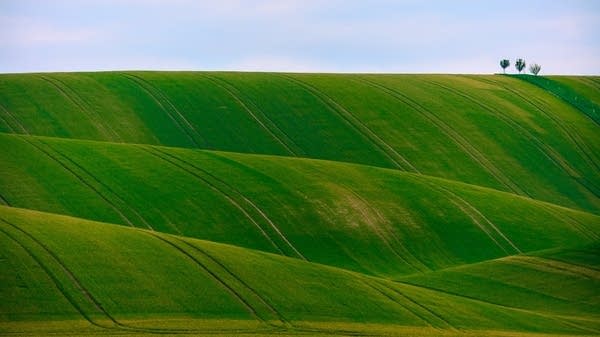Throughout the history of art, rural life and rural scenes have played a significant role in inspiring artists of all kinds. Consider rural subjects in paintings (many impressionist works spring to mind), photography (Ansel Adams, for one), theater (Our Town, Oklahoma!), and others — not to mention the impact of the rural landscape on music.
When you first consider music about the countryside, you might naturally think of various types of folk music and region-specific styles like bluegrass — but don't overlook the impact that country life and environments have had on classical music as well. Indeed, some classical compositions really seem to speak of the beauty of farms, fields, nature, and animals. In some of these cases, the composer was specifically attempting to draw the listener's attention to these details, and in others the pastoral theme is more subtle.
If you're interested in exploring classical "country music," here are a few selections to get you started.
Beethoven's Symphony No. 6
Commonly known as the "Pastoral" symphony, or "Recollections on Country Life," Beethoven's 6th is a joyful and peaceful take on the countryside experience, with the intended themes and imagery made additionally clear to the listener thanks to Beethoven's helpful titles and score notes (one of the few Beethoven works to feature such programmatic information). Beethoven himself called the 6th symphony "more an expression of feeling than painting," but the country imagery is definitely here.
The first movement ("Awakening of happy feelings on arrival in the country") is a peaceful, sometimes almost lazy, sometimes more inspiring "walk" segment, ending with a charming sequence of the woodwinds simulating bird calls. This is followed by a soft brook sequence ("Scene by the brook"), and a more upbeat and energetic movement ("Joyous gathering of country folk"). The fourth movement ("Thunderstorm") is truly brilliant, featuring a clear and detailed musical approximation of weather, beginning with light "raindrops," followed by intense "thunder." Like many thunderstorms, the movement is brief, lasting only a few minutes. It then transitions into the fifth and final segment ("Shepherd's song; happy and thankful feelings after the storm") which is calmer and more uplifting, and features a few moments of the shepherd's peaceful "yodeling."
It's a great symphony, and a wonderful ride.
Saint-Saëns's Carnival of the Animals
No matter how you slice it, Camille Saint-Saëns's Carnival of the Animals is a delightfully imaginative and unique piece. Clocking in at less than half an hour total, the Carnival features 14 segments, most of which are dedicated to musically portraying a single animal or type of animal.
Some of the animals in the "carnival" are more exotic (like kangaroos and the elephant), but Saint-Saëns also pays a loving homage to some common rural creatures. One delightful — if very brief — piece is "Hens and Roosters," which features the piano and strings imitating the hens "pecking," and the piano also playing the part of the crowing roosters.
Remember that this music was written in the 1880s — a time when the average person experienced a more closer daily interaction with common farm animals — and you can start to see that Saint-Saëns's musical stylings would resound even more strongly with listeners at that time than they do today. All of the pieces in the Carnival are three minutes or less, so the entire suite is an excellent choice for introducing children to classical music.
Read more about Saint-Saëns's children's classic.
Vivaldi's The Four Seasons
The well-known (and often recorded) Four Seasons has a very country feel, and these themes are even easy to recognize, thanks to a series of accompanying sonnets (which may have been written by Vivaldi). In addition to the generally pleasant and peaceful qualities of the seasons themselves, be on the listen for such "country" details as a "barking" dog, wind and storms, insects, hail, farmers harvesting grain...and the chilly "stamping" of feet to keep warm in the winter!
Daniel Johnson is a Wisconsin-based photographer and writer, and the author of several nonfiction titles. You can see his photography work (he does a lot of rural life!) at foxhillphoto.com. He's a long-time piano and guitar player, and Nocturne in E-flat Major Op. 9, No. 2 is his all-time favorite piece of classical music.
Love the music?
Show your support by making a gift to YourClassical.
Each day, we’re here for you with thoughtful streams that set the tone for your day – not to mention the stories and programs that inspire you to new discovery and help you explore the music you love.
YourClassical is available for free, because we are listener-supported public media. Take a moment to make your gift today.











